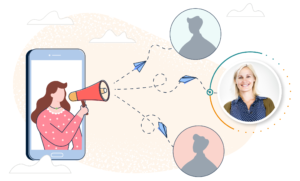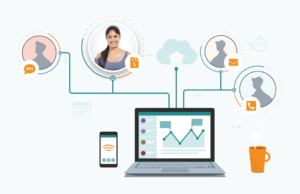The pandemic has accelerated the need and acceptance — by both healthcare providers and patients — for digital applications that streamline and modernize patient interactions. From virtual intake to post-visit patient financial engagement, RCM companies are well-positioned to offer new value-added services and technology to better serve their provider customers and the needs of their patients. However, the automation and integration gaps that exist between health IT systems create real challenges.
Here at Raxia, we recently implemented a patient financial engagement solution for a mid-size RCM company that was managing patient billing through a number of niche legacy practice management (PM) systems that did not interoperate. Our shared goal was to reduce effort and improve collection rates through a combination of automation and AI-driven communication (via multiple channels: direct mail, text message, voice, email) that was personalized for each patient.
A personalized digital outreach campaign can be a daunting endeavor when the data to drive the campaign has to be collected from disparate EHR/PM systems that each store and process data differently. And when you want to make sure you have timely patient information on hand by pulling data from these PM/EHR systems, it becomes clear that human labor alone can not solve this problem.
In the case of the aforementioned RCM client, at any given time they oversee roughly 30,000 patients with outstanding balances. In order to gather the latest statement information (which includes procedures, CPT codes, fees, and insurance adjustments) for these patients, 30,000 individual statement queries must be requested through a variety of EHR interfaces. Then up-to-date patient contact information — which includes email addresses and mobile phone numbers — must be harvested in multiple ways from the source EHRs. The sheer effort required to put this information to work — gathering, merging, analyzing, and restructuring data — is effectively impossible to perform manually due to the vast quantity of labor required.
Take the task of reaching out to these 30,000 patients with outstanding balances and presenting them with a digital bill. For the purposes of calculating effort, let’s use mouse clicks as representative of total labor. The automated tasks were as follows:
- Generating a report of all patients with an outstanding balance: 25 mouse clicks per practice with approximately 50 practices results in 1,250 clicks per week
- Downloading an up-to-date statement for each patient: 18 mouse clicks per patient; totaling 540,000 clicks per week
- Capturing up-to-date digital contact information for each patient: 5 mouse clicks or 150,000 clicks per week
Gathering data for 30,000 patients thus requires nearly 700,000 mouse clicks. Per week. On a monthly basis, it would be over 2.7 million clicks to generate the data required just to start a modern digital patient financial engagement effort.
If we assume the average office worker could navigate an interface at a rate of one-click every three seconds, 2.7 million clicks would take 2,250 hours — that’s equivalent to 13 people working full-time each month to accomplish the necessary data collection. And this doesn’t even consider the effort related to merging and processing the data that’s been gathered. Nor does it take into account the mind-numbing drudgery associated with a repetitive task of this nature. Again, 281 work days is the bare minimum human effort to access, download, merge and process patient payment data over the course of a month. Hand this effort off to Raxia’s AI and the human effort for the RCM is precisely zero hours per month.
It’s no wonder RCM companies and their client practices are trapped in a world of paper statements and heterogeneous patient AR workflows. Manually aggregating a mountain of data from multiple EHRs in order to modernize the patient AR of dozens or hundreds of client practices is, frankly, impossible. The promise of AI automation is more than simply replicating and replacing the repetitive tasks that RCM companies must already engage in. It is equally about unlocking so much more capability through automation and, thus, gaining comprehensive access to previously unattainable data — then using that data in powerful novel ways.



